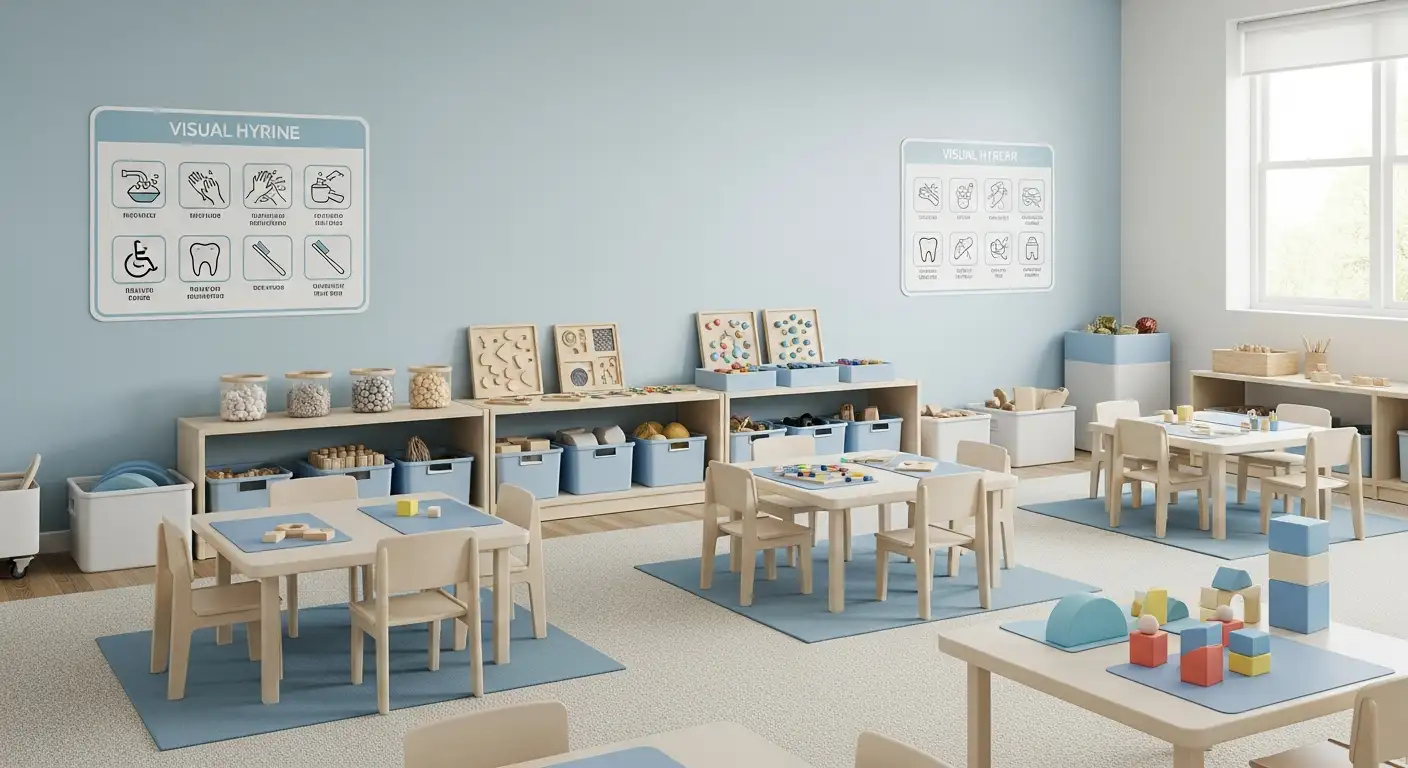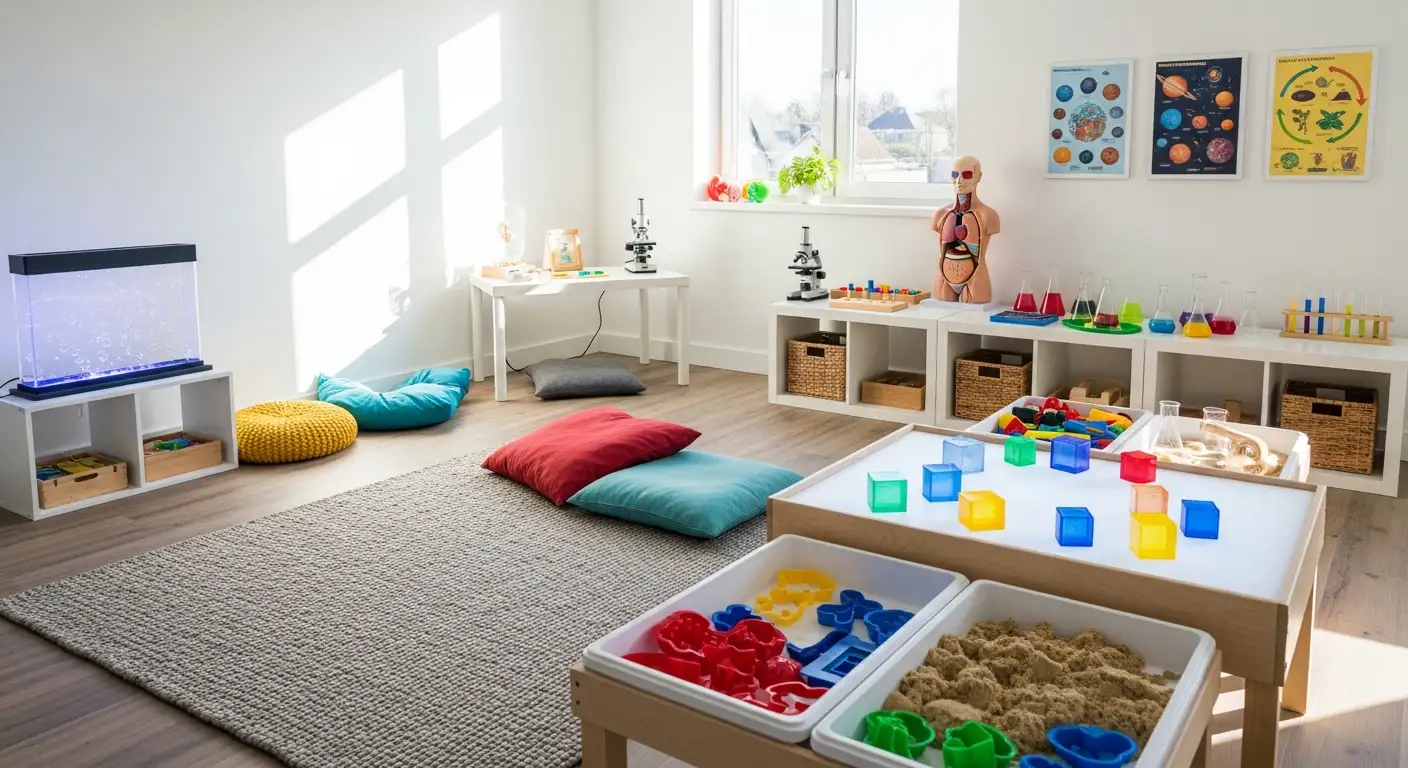How to Help People with Autism Understand Rules and Expectations
Effective Strategies for Supporting Autistic Individuals with Rules and Expectations

Understanding the Unique Needs of Autistic Individuals
Helping people with autism understand rules and expectations requires a respectful, individualized approach that considers communication differences, sensory sensitivities, and behavioral needs. This article explores evidence-based methods and therapeutic strategies that foster cooperation, reduce anxiety, and promote positive behaviors, ultimately empowering autistic individuals to thrive in structured environments.
Applied Behavior Analysis (ABA) Therapy: Foundations and Applications

What is Applied Behavior Analysis (ABA) therapy, and how is it used to help individuals with autism?
Applied Behavior Analysis (ABA) therapy is a science-driven method focused on understanding and changing behaviors. It uses reinforcement to increase positive behaviors such as communication, social skills, and daily living abilities, while reducing unwanted or harmful behaviors.
ABA therapy is tailored to each individual’s needs through personalized programs developed by trained professionals like Board Certified Behavior Analysts (BCBAs). It employs techniques including Discrete Trial Training (DTT), Pivotal Response Treatment (PRT), and naturalistic teaching strategies, adapting to the person's learning style and stage.
Techniques used in ABA
The therapy employs a behavior analysis framework that examines antecedents (what happens before a behavior), behaviors themselves, and consequences (what follows the behavior). This helps identify why behaviors occur and how to effectively encourage desired actions.
Positive reinforcement plays a central role. Praising successes, providing rewards, and celebrating achievements motivate individuals with autism and foster a sense of competence. Reinforcement systems encourage repetition of favorable behaviors by linking them to positive outcomes.
Role in supporting communication and independence
ABA focuses on teaching functional communication skills such as requesting, commenting, or engaging socially, which can reduce frustration and challenging behaviors by offering appropriate ways to express needs.
It also builds independence through life skills training, helping individuals manage self-care, transitions, and social interactions more successfully. Skills like waiting for turns, adapting to changes, and coping strategies are emphasized, enhancing emotional regulation and self-advocacy.
Overall impact
Research consistently shows ABA’s effectiveness, especially when started early and delivered intensively. It improves language, cognitive abilities, social engagement, and adaptability, enabling individuals with autism to participate more fully in their communities.
| Aspect | Description | Impact |
|---|---|---|
| Behavior Analysis Framework | Study of antecedents, behaviors, and consequences | Identifies behavior purpose; guides intervention strategies |
| Positive Reinforcement | Praising and rewarding desired behaviors | Increases motivation and competence |
| Communication Support | Teaching functional communication skills | Reduces frustration and challenging behaviors |
| Skill Development | Focus on independence and daily living | Enhances self-reliance and coping abilities |
| Individualized Approach | Tailoring to each child's unique needs | Maximizes effectiveness and personal growth |
The Professionals Behind ABA Therapy and Their Qualifications
Roles of BCBAs and RBTs
ABA therapy is primarily delivered by a team that includes Board Certified Behavior Analysts (BCBAs) and Registered Behavior Technicians (RBTs). BCBAs are highly trained professionals who design and oversee individualized behavior intervention plans, often based on assessments like Functional Behavior Assessments (FBAs). RBTs, under the direct supervision of BCBAs, implement these plans in daily therapy sessions, ensuring consistency and fidelity.
Qualifications and Certifications Required
BCBAs must hold an advanced degree in psychology, education, or a related field and obtain certification through recognized bodies such as the Behavior Analyst Certification Board (BACB). This certification requires passing a rigorous exam and completing supervised practical experience. RBTs require specialized training and certification focused on direct behavioral interventions but usually do not need advanced degrees. Both roles demand ongoing professional development to stay current with best practices.
Importance of Family Collaboration
Successful ABA therapy depends greatly on collaboration with families. Providers work closely with caregivers to share progress, adjust strategies, and teach skills that can be practiced at home. Engaging families ensures interventions are consistent across environments and supports generalization of skills.
Supervision and Treatment Planning
BCBAs are responsible for continuous supervision of RBTs and other therapy staff. They conduct assessments, develop, and adjust treatment plans tailored to each child's unique needs. Regular supervision meetings help maintain high-quality intervention delivery and allow timely modifications to address evolving goals and challenges.
Goals and Outcomes of ABA: Promoting Positive Behaviors and Independence
What are the common goals and outcomes targeted by ABA therapy in autism treatment?
ABA therapy focuses on increasing helpful behaviors and reducing problematic ones in children with autism. This includes improving communication skills so children can express their needs and feelings more effectively. Social skills training is another major goal, helping children engage positively with peers and adults.
Behavior targets in ABA
ABA targets behaviors like language use, play skills, motor abilities, self-care such as dressing or feeding, and academic tasks. Challenging behaviors, including aggression or self-injury, are analyzed to understand their causes and replaced with functional communication and coping strategies.
Improving communication and social skills
Therapy emphasizes teaching functional communication methods like verbal skills, picture exchange systems, or sign language. Social skills training involves role-playing and video modeling to help children interpret social cues and develop friendships.
Enhancing daily living skills
Daily living skills, such as self-care routines, task completion, and adaptive behaviors, are critical for fostering independence. Occupational therapy often complements ABA to address sensory sensitivities and fine motor skills.
Customizing goals for individual needs
Goals are personalized after careful assessment by behavior analysts or therapists to match each child's strengths and challenges. Regular monitoring ensures progress and adjustments when necessary, supporting an individualized and effective approach.
ABA therapy provides a structured and evidence-based framework to promote growth in communication, social interaction, and practical skills. Ultimately, it helps children with autism lead more independent and fulfilling lives.
Measuring the Effectiveness of ABA Therapy
How is the effectiveness of ABA therapy measured and evaluated?
ABA therapy effectiveness is tracked primarily through systematic data collection. Both clinicians and caregivers record specific behaviors and skill achievements consistently over time, enabling clear analysis of progress trends.
Data collection methods in ABA
Data collection involves noting frequency, duration, or intensity of target behaviors. This detailed information allows for a precise understanding of how interventions influence the child's development.
Individualized goal tracking
Each child’s ABA plan is tailored with individualized goals reflecting their unique needs. Progress is gauged by how well they meet these personalized objectives, emphasizing functional communication, social skills, and behavioral improvements.
Use of standardized tools
Clinicians also employ standardized assessment tools and formal progress reports to benchmark development across multiple domains. These tools complement ongoing data gathering by providing structured evaluations.
Adjusting treatment based on progress
Importantly, therapy is dynamic; data-driven adjustments are made to reinforce effective strategies and modify approaches where growth is slower. This ensures that interventions remain responsive to the child's evolving abilities.
In summary, measuring ABA effectiveness blends individualized data tracking with standardized assessments, guided by continual reassessment to foster meaningful developmental gains.
Addressing Criticisms and Challenges of ABA

What challenges or criticisms exist regarding ABA therapy in autism care?
Applied Behavior Analysis (ABA) therapy, while widely used in autism care, faces several notable criticisms and challenges. Historically, some ABA practices involved rigid and repetitive techniques, including the use of punishment and even aversive methods like electric shocks—practices that have largely been discontinued today. These earlier methods raised serious ethical concerns and contributed to skepticism about ABA from many in the autistic community.
Critics argue that traditional ABA may focus too heavily on altering behaviors without sufficiently addressing the child's emotional needs. For example, behaviors such as stimming, which serve as self-regulation tools, have sometimes been targeted for elimination, potentially leading to emotional distress and masking—where autistic individuals suppress their natural responses to fit societal norms. This masking can impact mental health, causing anxiety or exhaustion.
Ethically, questions arise about whether ABA places conformity above acceptance of neurodiversity, risking that harmless or functional behaviors get suppressed unnecessarily. There is also concern that ABA’s structured, often intensive approach could overwhelm some children and not always account for their individuality or sensory preferences.
Recognizing these issues, modern ABA has evolved toward more naturalistic, play-based methods. These approaches emphasize individualized strategies, respect for the child's communication styles, and the importance of building trust and emotional regulation rather than solely focusing on behavior modification. While these advances aim to reduce previous negative impacts, ongoing debate persists around balancing skill development with respecting neurodivergent ways of thinking and acting.
Overall, the conversation highlights the importance of ethical, empathetic, and personalized ABA practices, informed by autistic voices and knowledge, to ensure interventions support both growth and well-being.
Visual Supports and Structured Teaching for Understanding Rules
Use of visual schedules and timers
Visual schedules and timers are essential tools that help children with autism comprehend daily routines and anticipate upcoming activities. These aids provide clarity and reduce anxiety by making abstract concepts like time and sequence more tangible. Timers also prepare children for transitions, signaling when one activity ends and another begins.
Modeling expected behaviors visually
Demonstrating expected behaviors through visual cues and modeling is highly effective. Using pictures or videos to show desired actions gives clear examples that children can imitate. This approach helps bridge communication gaps and reinforces learning by making expectations explicit.
Breaking tasks into manageable steps
Complex tasks can overwhelm children with autism. Breaking activities into smaller, clear steps simplifies understanding and reduces frustration. Step-by-step instructions paired with visual supports help maintain focus and build skills gradually.
Predictability and routine establishment
Creating predictable routines with consistent visual supports fosters a sense of security. Predictability minimizes surprises and stress, which can trigger anxiety or challenging behaviors. Visual aids like schedules and timers reinforce these routines, enabling children to anticipate and comply with expected rules more easily.
Together, these strategies enhance comprehension and cooperation, creating a supportive environment where children with autism can thrive and engage confidently.
Positive Reinforcement and Encouraging Desired Behaviors

Celebrating successes and positive feedback
Positive reinforcement plays a central role in motivating children with autism. Celebrating even small successes encourages continued effort and builds a sense of competence. Positive feedback acts as an immediate reward, helping children feel valued and understood, which fosters motivation for learning new skills and engaging in desired behaviors.
Reinforcement systems and rewards
Structured reinforcement systems, including tangible rewards, privileges, and verbal praise, support the consistent encouragement of wanted behaviors. These systems help children connect their efforts with positive outcomes, making it more likely they will repeat the behaviors. Rewards can be personalized based on the child's preferences to maximize engagement and effectiveness.
Descriptive praise and its effect
Using descriptive praise—specific feedback that details what behavior is being appreciated—helps children understand what actions are desirable. For example, saying "I like how you waited your turn" rather than a generic "good job" clarifies expectations and encourages repetition of that behavior. This clarity reinforces positive conduct and builds the child's self-awareness.
Balancing essential behaviors with positive experiences
Focusing on essential skills while ensuring children enjoy positive experiences is important to maintain motivation and reduce anxiety. Encouraging flexibility, adaptability, and self-regulation skills alongside rewarding preferred interests helps build resilience. Such balance nurtures growth without overwhelming the child, making learning a more enjoyable and effective process.
Accommodations and Sensory Considerations to Facilitate Compliance

How can sensory-friendly tools and spaces support children with autism?
Providing sensory-friendly spaces and tools is essential for helping children with autism manage sensory overload and maintain focus. Items such as noise-canceling headphones, fidget toys, and quiet, calm-down areas allow children to regulate their sensory input. These accommodations create an environment that reduces distractions and supports emotional regulation, enabling better cooperation and engagement.
Why is allowing self-stimulatory behaviors important?
Allowing time for self-stimulatory behaviors, or "stims," when appropriate respects the child’s sensory needs and helps in self-regulation. These behaviors often provide comfort and help reduce anxiety. Recognizing and permitting these actions, rather than suppressing them, fosters trust and emotional well-being.
How does offering choices within limits help?
Offering children choices within predetermined parameters gives them a sense of control, which can significantly reduce oppositional and challenging behaviors. Providing options tailored to their needs supports autonomy while maintaining structure. This balance encourages cooperation and reduces frustration.
What strategies are effective for managing sensory overload and anxiety?
Managing sensory overload involves understanding individual triggers like loud noises, bright lights, or crowded spaces and providing appropriate accommodations. Preparation, such as using visual schedules and timers, can make environments more predictable. Calm responses from caregivers, combined with positive reinforcement and distraction methods, also help children navigate anxiety and sensory challenges more effectively.
| Strategy | Description | Benefit |
|---|---|---|
| Sensory-Friendly Tools | Noise-canceling headphones, fidget toys | Reduces sensory overload, enhances focus |
| Designated Calm-Down Spaces | Quiet, safe areas for emotional regulation | Supports self-regulation and reduces anxiety |
| Allowing Self-Stimulatory Behaviors | Respecting sensory needs through appropriate stimming | Builds trust and emotional stability |
| Offering Choices Within Limits | Controlled options tailored to the child's needs | Increases autonomy and reduces frustration |
| Visual Supports and Scheduling | Use of pictures, timers, and routines | Makes environments predictable, lowers anxiety |
Communication Strategies and Respectful Interaction

Listening and Validating Verbal and Non-Verbal Communication
Respecting a child's communication, whether verbal or non-verbal, is fundamental in improving understanding and cooperation. Paying close attention to both spoken words and body language helps caregivers and educators better interpret the child's needs and feelings. Validating these concerns fosters trust and supports the child's emotional regulation.
Asking About Preferred Methods of Communication
Since autistic children may vary widely in how they communicate, it is essential to inquire about their preferred communication styles. This approach respects individual differences and ensures that interactions are effective and comfortable for the child. Adjusting communication methods based on these preferences promotes more positive engagement.
Using Clear, Literal Language
Communication should avoid assumptions and ambiguous expressions. Using literal, clear, and concise language helps prevent misunderstandings often experienced by autistic individuals. Descriptive praise and specific instructions further enhance comprehension and cooperation by making expectations straightforward.
Teaching Self-Advocacy Tools Like PECS Cards
Empowering children with autism to express their needs is critical. Teaching tools such as Picture Exchange Communication System (PECS) cards allows children to request breaks or communicate desires effectively, promoting self-regulation and independence. These tools not only provide alternative communication avenues but also encourage active participation in their own care and learning.
Together, these communication strategies create an environment where autistic children feel heard, respected, and supported, laying the foundation for positive interactions and behavior management.
Supporting Transitions and Emotional Regulation
How can visual or verbal cues help prepare autistic children for changes?
Preparing children with autism for transitions or changes using visual or verbal cues significantly reduces anxiety and resistance. Visual schedules, timers, and advance warnings give children a clear understanding of what to expect next, making environments more predictable. This preparation helps them anticipate activities and adapt more smoothly, thereby reducing stress associated with unexpected transitions or disruptions.
Why is creating calm-down spaces important?
Designating a safe, calm-down space provides children with a reliable and soothing environment where they can retreat to regulate their emotions. Such spaces reduce sensory overload and allow children to engage in self-soothing behaviors safely. This approach supports emotional regulation by giving children control over their sensory and emotional needs in a non-judgmental setting.
How can teaching self-regulation and coping skills benefit autistic children?
Teaching self-regulation skills, such as recognizing when a break is needed and using tools like Picture Exchange Communication System (PECS) cards to request it, encourages independence and self-advocacy. Coping strategies help children manage stress and anxiety effectively. Reinforcing flexibility, adaptability, and emotional literacy builds resilience, enabling children to better handle changes and challenges.
What is the role of alternating easier and more challenging tasks?
Balancing easier, engaging activities with more challenging ones helps maintain motivation and cooperation. This alternation reduces frustration and prevents boredom or anxiety. It allows children to succeed frequently, promoting positive reinforcement, while gradually building their capacity to handle complex tasks without overwhelming them.
Building Understanding and Empowerment
Helping people with autism understand rules and expectations is a multi-faceted process that benefits from individualized, respectful approaches grounded in evidence-based practices like ABA therapy. Incorporating visual supports, positive reinforcement, sensory accommodations, clear communication, and emotional regulation strategies helps reduce anxiety and challenging behaviors. Moreover, listening to autistic perspectives and adapting methods to their unique needs fosters trust and cooperation. By blending professional expertise with empathy and flexibility, caregivers and educators can create supportive environments where autistic individuals gain skills, independence, and confidence to navigate rules and expectations successfully.
References
- Helpful strategies to promote positive behavior
- 15 Behavior Strategies for Children on the Autism Spectrum
- A Professional's Guide to Supporting Autistic Clients and ...
- Treatment for Behavioral Issues in Autism
- Effective Classroom Strategies for Teaching Students with ...
- How To Handle Socially Inappropriate Behavior in Public
- How to Discipline a Child on the Autism Spectrum
- 10 Essential Behavioral Therapy Techniques for Autism ...
- Applied Behavior Analysis (ABA)
















